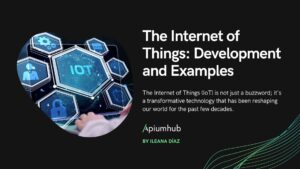Table of Contents
The key to efficient, integrous data analysis is a team-based intelligent analytical approach. This means coordination between departments and teams through the implementation of agile methodologies. As Apiumhub explains, agile means: “flexibility, adaptability, continuous improvement and rapid feedback.” This interactive approach leads to incremental evolution, and though we are talking about analysing big data, can be applied in any team or to any project.
When analysing big data, or really any kind of data with the motive of extracting useful insights, a few key things are paramount. First and foremost, we must remember that quantity does not necessarily mean quality. Companies have been storing data, and paying a fair bit to do so, for a good few years and are now starting to hire data analysts in the hope that they will be able to provide them with the right metric-based knowledge to backup their business efforts. However, these companies, bar Google, Amazon, Facebook and a few others, probably had little idea of how to collect and store this data in the first place.
The first question that you should be asking is “Did they collect the right data to answer the business questions?” After all, if you want to prove the hypothesis that people between the ages of 15-25 are more likely to buy your product than those over 50 but have no record of your customers’ age, it will be impossible to prove or disprove the theory. If you’re trying to obtain a correlation between x an y, the relevant data must already be at your disposal.
Data mentor at Ubiqum Code Academy, Joan Manuel Lòpez, gives his top tips for analysing big data:
“Working with Big Data means dealing with massive volumes of data, in the order of TeraBytes, so it is necessary to use distributed computer clusters, hosted in the cloud, working in parallel. Most of these clusters use platforms such as Hadoop or Spark. The high variability of this data, as well as the required scalability, brings the obsolescence of the traditional relational databases. No-SQL databases such as MongoDB, Couch, or Cassandra are replacing the old RDBMS such as MySQL. Moreover, anyone who wants to dive into Big Data should be familiar with technologies such as AWS, OpenShift, or Windows Azure.”
Quantity doesn’t always mean quality
Just because you have a massive amount of big data at your disposal, does not mean that this is quality data. In fact, it all depends on what question you want answered and whether this data can do so. Having a lot of data isn’t helpful when the data doesn’t answer the questions that you have. Data has a higher quality when there is a correlation between the data and the business question that your organisation needs answered. This means sorting through the data with the help of a data analyst. Their job will be to help you figure out what data is relevant to help answer the questions that your company has about their data set.
Clean your data
When analysing big data, the question you must ask yourself as an analyst is ‘Can I answer the client’s questions with this data set?’, if the answer is no – because the data is incomplete or irrelevant – be prepared to go back to the client and say so. The results you obtain from unclean “data swamps” or holey datasets will be incorrect. Often, you’ll be dealing with messy, unorganised data and companies who don’t know what to do with it or haven’t stored it well. Therefore, the data analyst is met with the massive task of sorting and cleaning this data, which in the case of big data, is incredibly time consuming. There are ton of different packages to help clean the data. And remember, data should be cleaned before employing machine learning practices.
Team collaboration and data analysis
Between departments in companies, it’s important to align data so it can be used with agile methods. Doing this can help to change your perspectives and see what others are doing. Knowing what and how others are completing their tasks will help with teamwork. Data analysis can help determine what data from your data cache will be relevant and needed to be known by different departments to keep information flowing.
Tools for analysing big data
While organizations can collect data easily, it is the application of this data to a defined business strategy that is harder to implement. There are many different tools that help a company to analyse and use the data that they have collected, here are a couple:
1.Sisense
A cutting-edge tool that is great for data scientists who are interested in incorporating predictive models.
2. TIBCO Spotfire
Highly rated design environment for interactive visualisation and building analytic dashboards. TIBCO incorporates statistical functions to allow for deeper analysis and exploration of patterns and trends within the data.
3. Grow
Ideal for small to medium organisations looking to get started with data visualisation and analytics.
4. BeyondCore
BeyondCore can be used to analyse huge sets of data, many people use it for healthcare related data since it can handle large amounts.
5. IBM Watson Analysis
This is a smart data discovery service available on the cloud. It is intended to provide the benefits of advanced analytics without the complexity.
6. SAP Lumira
SAP is a leader in this field with its strong analytics.
7. SAS Visual Analysis
This is part of its new analytics and visualisation structure called Viya, and can help businesses understand, forecast, create reports, and do text analysis of their data, and more.
Conclusion: analysing big data
Data intelligent frameworks with stewardship and collaboration will be the competitive differentiator that improves efficiency, integrity, and time to insight. Finding ways to collect, store, and use big data is going to help companies and organisations to find the relevant information they need to help their businesses flourish.
And don’t forget to subscribe to our monthly newsletter to receive more information about tips and tools for analysing big data !
If you found this article about tips and tools for analysing big data interesting, you might like…
- Top business blogs to read
- Human-centered innovation
- Barcelona makes it to the top 5 of innovation hubs
- Top smart city projects to watch
- Blockchain technology: use cases, statistics, benefits, startups & events
- Barcelona; one of the best smart cities in Europe
- Disruptive innovation to track
- The era of unicorns
- Top 20 promising startups in Barcelona
- IOT projects that may change the world
- Bridging marketing and software worlds
- Artificial intelligence – in math I trust









